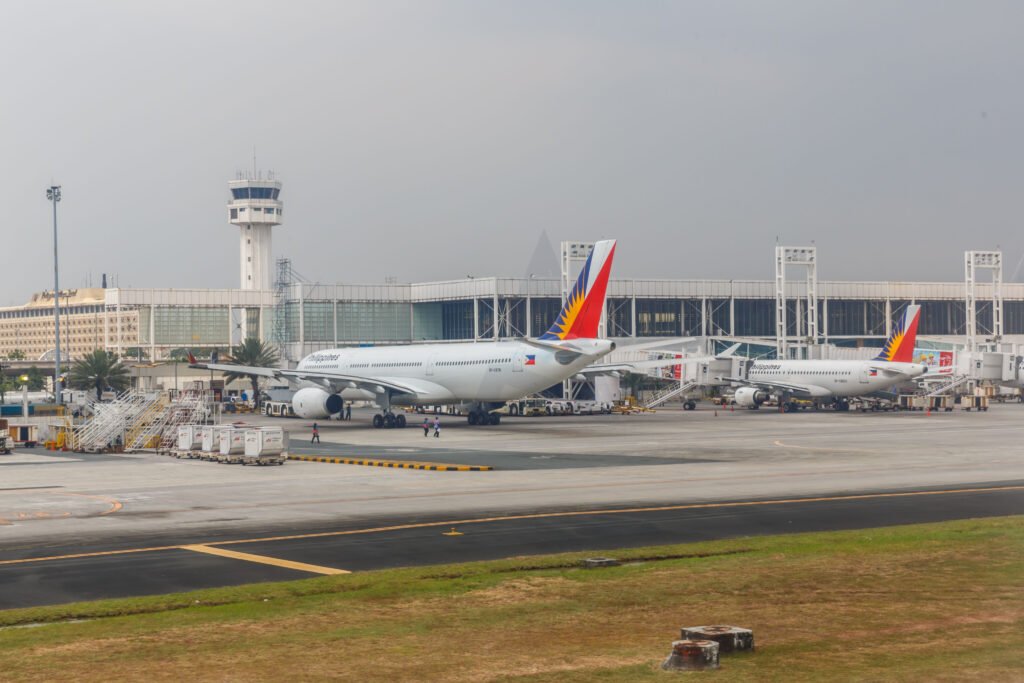As the highly anticipated New Manila International Airport (NMIA) is set to open by 2028, the question of what will become of the increasingly congested Ninoy Aquino International Airport (NAIA) has sparked considerable interest. With the new airport expected to alleviate the pressure on NAIA, many are wondering if the latter will follow the trend of other former primary airports worldwide and transform into a hub for low-cost carriers (LCCs).
Historically, several airports that were once the main gateways of their cities have successfully transitioned into hubs for budget airlines after the opening of new, larger airports. Notable examples include Paris-Orly, Bangkok Don Mueang, and Kuala Lumpur Subang, all of which were once primary international airports but became thriving LCC bases once newer, more modern facilities took over the primary international traffic. Similarly, airports like Dallas Love Field, Houston Hobby, Seoul Gimpo, and Taipei Songshan have embraced the LCC model, capitalizing on their established infrastructure and prime locations to cater to a growing demand for affordable travel.
The case for NAIA following a similar path seems compelling. As one of the most congested airports in the world, NAIA’s current capacity struggles to keep up with increasing passenger traffic, particularly with the surge in demand for low-cost travel in the region. In contrast, the New Manila International Airport, designed to handle up to 100 million passengers annually, will provide ample capacity for full-service airlines and international long-haul flights, creating more space at NAIA for domestic flights and budget carriers.
One of the primary reasons such a transition could benefit NAIA is the airport’s location. NAIA is conveniently situated near Metro Manila, the Philippines’ economic and population hub. This proximity makes it an attractive base for low-cost carriers seeking to tap into the dense urban population who are more price-sensitive but still prefer to fly to domestic or regional destinations. The LCC market has been booming in Southeast Asia, with airlines like Cebu Pacific, AirAsia, and Philippine Airlines’ budget arm growing rapidly, and many of these carriers would benefit from operating from an airport that offers lower operational costs compared to the main international terminal.
Moreover, several key infrastructure developments could help NAIA accommodate the increasing demand for low-cost travel. Runway expansions, terminal upgrades, and more efficient passenger processing systems could allow the airport to handle the increased traffic without overwhelming the existing terminals. Additionally, with NMIA focusing on international flights, NAIA could shift its focus towards handling more domestic flights and regional connections, which are the core routes for low-cost carriers.
That said, there are also some challenges that would need to be addressed before NAIA could successfully pivot to an LCC hub. While NAIA’s location is ideal, its infrastructure remains outdated, and it has long been plagued by congestion and inefficiency. The airport terminals, in particular, are often criticized for their lack of space and long queues, especially during peak travel times. Without substantial investment in upgrades, NAIA may struggle to meet the needs of an expanding LCC market, which requires efficient, streamlined operations and modern facilities.
Furthermore, the competition between New Manila International Airport and NAIA for the same catchment area of passengers could lead to a crowded and fragmented market, especially if the two airports are not fully integrated into a seamless travel network. NAIA’s transformation into an LCC hub would require close coordination with the Civil Aviation Authority of the Philippines and other stakeholders to ensure that both airports can coexist and complement each other rather than compete for the same traffic.
In terms of international competition, several large LCC hubs in Southeast Asia, such as Don Mueang International Airport in Bangkok and Kuala Lumpur Subang Airport, offer lessons in how smaller airports can effectively serve the budget airline market while still supporting regional and international traffic. However, these airports benefited from significant infrastructure improvements, and it remains to be seen whether NAIA will be able to make the necessary upgrades and adjustments to successfully cater to budget carriers.
Another important factor is the growing demand for sustainability in the aviation industry. Low-cost carriers often operate on tight margins, and NAIA would need to implement eco-friendly practices and modern technologies to ensure it remains competitive in a world that is increasingly focused on environmental sustainability.
Conclusion
The transition of Ninoy Aquino International Airport (NAIA) into a hub for low-cost carriers after the opening of New Manila International Airport is a plausible scenario. The success of former primary airports turned LCC hubs around the world, combined with the increasing demand for affordable travel in the Philippines, makes the idea an attractive one. However, the airport will need significant infrastructure improvements to handle the increased demand and meet the operational standards required by budget airlines.
With proper planning, investments, and strategic coordination, NAIA could carve out a strong niche as a regional hub for LCCs, helping to relieve congestion while maximizing the potential of its prime location near the heart of Metro Manila. For now, the opening of the New Manila International Airport provides an exciting opportunity to reshape the Philippines’ aviation landscape, with NAIA playing a key role in serving the growing low-cost travel market in the years to come.
